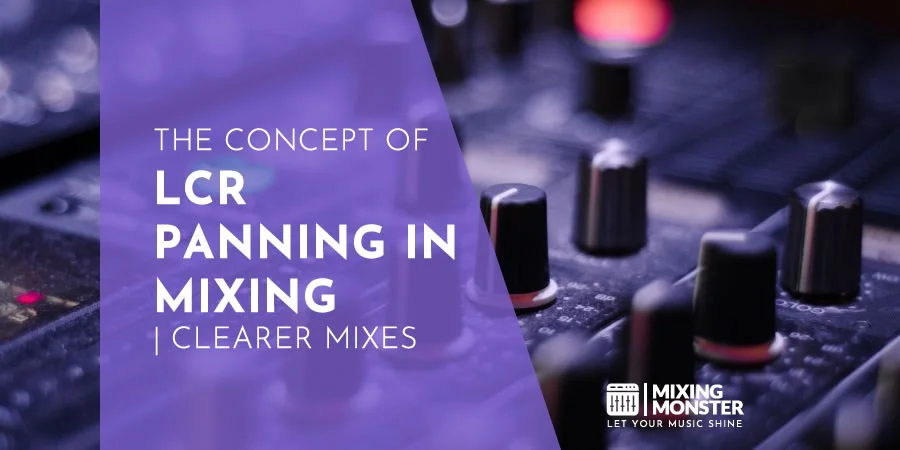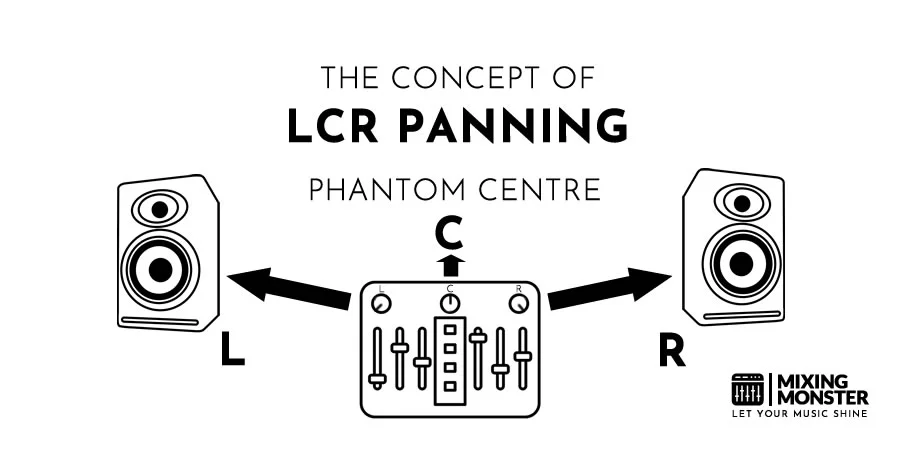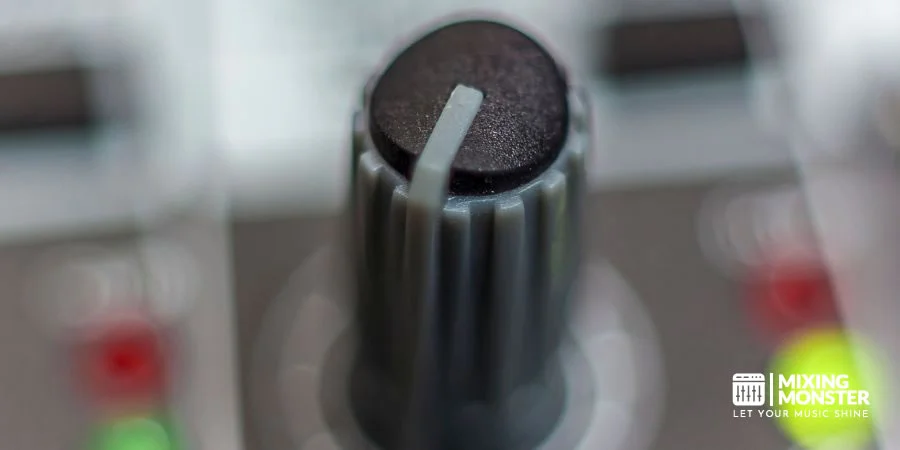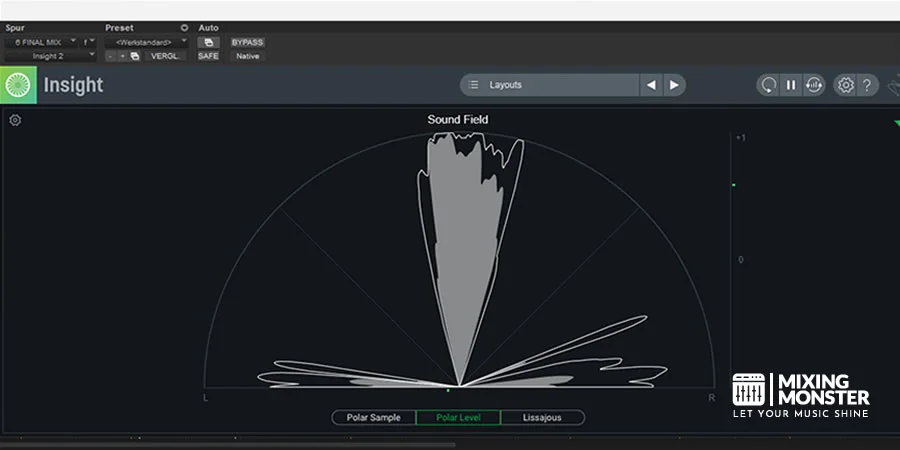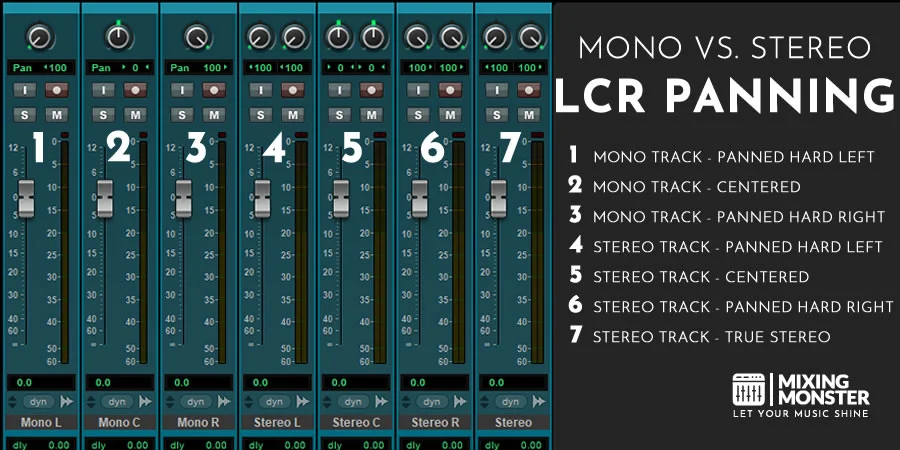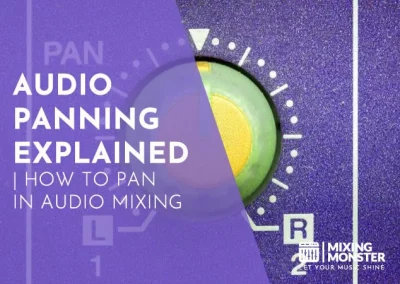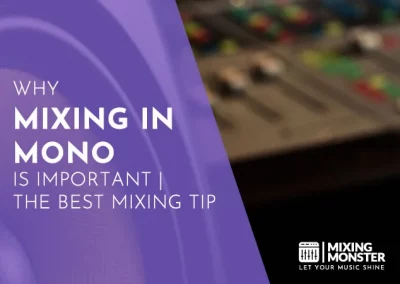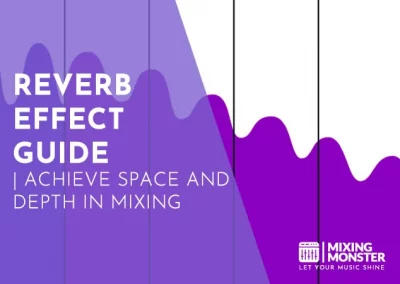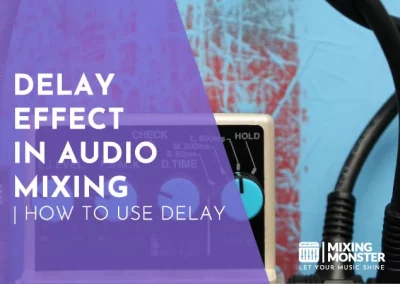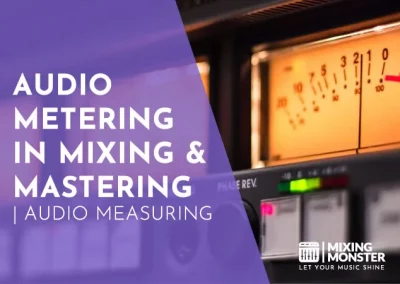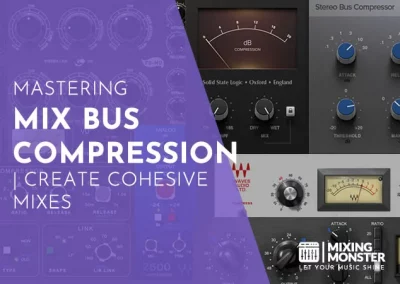Home > Blog > Mixing > Mixing Techniques
The concept of LCR panning in mixing audio is frequently used by many audio engineers. Understanding and applying the basic concept of LCR mixing is a great asset and should be implemented to at least some level of degree while mixing in stereo.
LCR panning or LCR mixing is a concept used in audio mixing, which refers to the positioning of a sound in a stereo or surround sound audio system. LCR stands for Left – Center – Right panning, in which the knob of a pan pot is adjusted either to the left, the right or the very center position.
Let’s take a look at what LCR panning is, how you can benefit from it and what you need to consider when applying this concept in your audio mixes.
Table Of Contents
1. What Is The Concept Of LCR Panning In Mixing?
2. What Are The Benefits Of LCR Panning?
3. Things To Be Aware Of While Using LCR Panning
4. How To Implement LCR Panning In Your Mixes
5. Considering The Music Genre With LCR Panning
6. LCR Panning Combined With Mixing In Mono

1. What Is The Concept Of LCR Panning In Mixing?
LCR panning is a technique to use while mixing audio tracks in stereo. The concept of LCR panning itself can be explained very quickly:
In essence, using LCR while panning an audio source means adjusting the position of a pan knob (etiher a physical one or a digital one) either to the very left (L), the right (R) or the center (C), even though intermediate pan positions are possible. This way, the audio engineer is limiting his options to position audio tracks in a mix to three areas in the stereo field, instead of making use of all available areas.
Other common terms to describe this positioning are “hard panned”, “full left”, “full right” and “centered”.
First, we need to clarify what “panning” is and when it comes into play during the audio production process.
Panning is a process of mixing audio signals to create a stereo image in a sound recording or in a sound reinforcement system. Panning an audio track is a common and widely used technique, in which a sound is positioned horizontally in a stereo or surround sound audio system.
This action is usually controlled by a pan pot. A pan pot is usually a rotary potentiometer (or a digital iteration) that can be adjusted to any intermediate position between its maximum values, full left and full right.
While mixing a song, the audio engineer makes decisions where to place each audio track in the stereo field, altering its pan position. On average, not every element in a mix is panned hard left and right or centered all the time. Understanding this concept and when to use LCR at the right time is crucial.
A lot of well know mixing engineers like Chris Lord Alge or Michael Brauer are relying on the concept of LCR mixing. Every audio engineer should know about LCR and what this technique can provide in order to produce better mixes.
2. What Are The Benefits Of LCR Panning?
In the past, mixing engineers had no other choice than to pan hard left, right or center because early stereo mixing consoles only had these options. Nowadays it is also possible to place audio tracks in between these positions.
So why would you want to go back and limit yourself to the LCR options again? Let’s discuss the benefits of applying this technique in your mixes.
The basic intention around hard panning and centering the audio tracks in a mix is to produce a clearer, more impactful sound with an increased perception of width. The idea is to reduce “overlapping” of audio elements in the stereo spectrum which otherwise could result in cluttering and masking.
While there are other measures available to achieve this, LCR panning, especially in the early stages of a mix, is a common way to get things going. Limiting your mindset regarding pan positions also helps to stay focussed and makes sure the most important areas in the stereo field are covered early on.
By at least temporarily applying LCR panning and by frequently checking your mix in mono an audio engineer increases his chances to make impactful mixing decisions in the most important areas of the stereo spectrum, which often result in a great outcome.
Benefits Of LCR Panning In Mixing:
- Can Increase The Mixing Workflow
- Often Leads To Clearer, More Impactful Mixes
- Can Lead To A Wider Mix With Increased Stereo Width
- Helps To Place And Control Low End Content In The Stereo Field
- The Center Is A Lot Cleaner To Hear
- Ensures Directional Separation Of Audio Elements
- Can Increase Audibility Of Different Elements In A Mix
- Avoids Directional Confusing
- Can Reduce Cluttering And Frequency Masking
3. Things To Be Aware Of While Using LCR Panning
It is necessary to get a basic understanding of the stereo spectrum or stereo field, while using LCR panning or panning in general. During mixing (and mastering) sessions, it is important to monitor the sound field of a track.
This is often displayed as a semicircle, which should give a graphical representation of the stereo spectrum. As a metaphor, think of it as a canvas, which can be filled with colors.
A track played back in mono mode would only show a single vertical “line” in the middle of the semicircle. A track played back in stereo with different panned elements can look like the graphic above.
Another great feature of monitoring the stereo field is the option to check the overall phase correlation, represented by the vertical line on the right, going from +1 at the top to -1 at the bottom (values between 0 and +1 indicate good phase correlation)
The second basic element to be aware of is the difference between mono and stereo tracks in the concept of LCR panning. LCR seems trivial while panning mono tracks, while panning stereo tracks LCR can be confusing for beginners.
Here is a simple graphic to shed some light on the topic:
To make it clear: in case you desire to work in LCR mode only, both pan knobs of a stereo track should be aligned exactly the same (both hard left, hard right or centered). Even though a stereo track can contain mostly mono information (and also “sound mono”), technically it uses the full stereo spectrum when the left channel is panned to left and vice versa.
This leads to the next consideration. When you are making decisions on how to pan an audio track, always be aware of which element you are looking at.
A bass track, often recorded in mono should be placed in the center of the stereo field, while it doesn’t make much sense to “mono out” (see #4-6 in the graphic above) the stereo overheads track of a drum recording and panning it hard left.
Tracks that contain important stereo information for the mix shouldn’t be handled with a LCR panning mindset.
The next thing to be aware of is that LCR panning can lead to more space in the phantom centre. The phantom centre is a psycho-acoustic phenomenon which describes that if the same sound arrives at both ears at the same time with the same intensity, it appears to originate from a point in the center of the two speakers.
By limiting yourself to only three pan positions and avoiding intermediate ones, you create a lot of space in between the sides and the center. This is often intentional, however, it can lead to irritations for the listener.
Last but not least, LCR panning can introduce phase issues, which can occur especially in the low end (due to the size / length of the wave forms and the potential for overlapping). Checking for phase correlation and possible phase cancellation while working in LCR is crucial.
Working in mono can help to notice these phase cancellations, we will discuss that in point 6.
4. How To Implement LCR Panning In Your Mixes
So now that we know what LCR panning is and what to be aware of while applying it, let’s talk about how you can implement this technique in your mixes.
LCR panning should be considered as a general mixing mindset, rather than an obligat measure. It is a good idea to start with LCR positions in the initial balance mix, which mixing engineers often start with while mixing a song.
See it as a starting point to find a balance to start with, later on, the initial LCR adjustments can be altered and often automated to some degree in order to create the perfect position in the stereo field along the timeline.
This technique often comes into play to create excitement reagrding the chorus-verse dynamic of a song. To emphasize the chorus and to create more width and impact, sound elements can be panned hard left and right during the chorus while being “pulled” to the center in the verse section.
Another creative option to use LCR automation is as an effect: imagine a song intro in which a synth is “wandering” from the far left or right to the center constantly while its loudness is being increased… imagination is the limit here.
So what are common pan positions of individual elements in a mix while using the LCR technique? Here is a short list to get you started (see this as a rule of thumb):
Common Pan Positions Of Song Elements In LCR Panning:
| Center (C) | Sides (L/R) |
| Lead Vocals | Background Vocals |
| Kick | Guitars |
| Snare | Some Percussion Elements |
| Bass | Synths |
A quick note on panning low end frequency content to the sides:
Hard panning dedicated low end content should be avoided. After panning elements with low end frequency content, make sure to control them in order to avoid phase cancellation (as mentionend in point 3).
200 Hz and below can become a problem, often interfering with the centered low end of the bass section. Applying a gentle low end roll off, maybe a 12dB per octave filter in this area can adress the problem. Make sure not to eliminate the low end by setting filters too aggressively.

5. Considering The Music Genre With LCR Panning
A quick word about the concept of LCR regarding the music genre: LCR panning is often associated with specific music genres.
True LCR panning is often used in music genres that contain dense mixes with a lot of musical elements in them. Songs with massive guitar (“walls of guitars”) and synth sounds are an example. The rock and metal genre often benefits from LCR panning, as long as each element is checked for phase correlation.
In other genres, the concept of LCR is rarely used, if not completely avoided. For example orchestral and classical music as well as jazz and acoustic tracks aren’t mixed in LCR very often. This is a thing to keep in mind.
If you are unsure where to pan an element in a mix, simply listen to a lot of different professional tracks in a genre and take some notes. You will get better at placing elements in the stereo field over time.
6. LCR Panning Combined With Mixing In Mono
In this article, we mentioned the necessity to check for phase correlation while mixing with an LCR mindset. The best way to do this sonically is to check your mix in mono.
A common example of phase cancellation in an LCR scenario is the interference of multiple hard panned electric guitars on the sides with the low end of the bass section. In addition to this, each guitar track could be out of phase with another guitar part.
In order to assess that, switching your track to mono playback at several stages of the mixing process is a must. Feel free to read our article about mixing in mono and why it is important.

